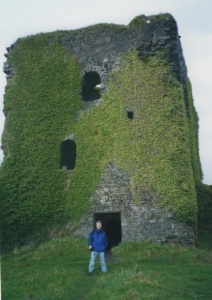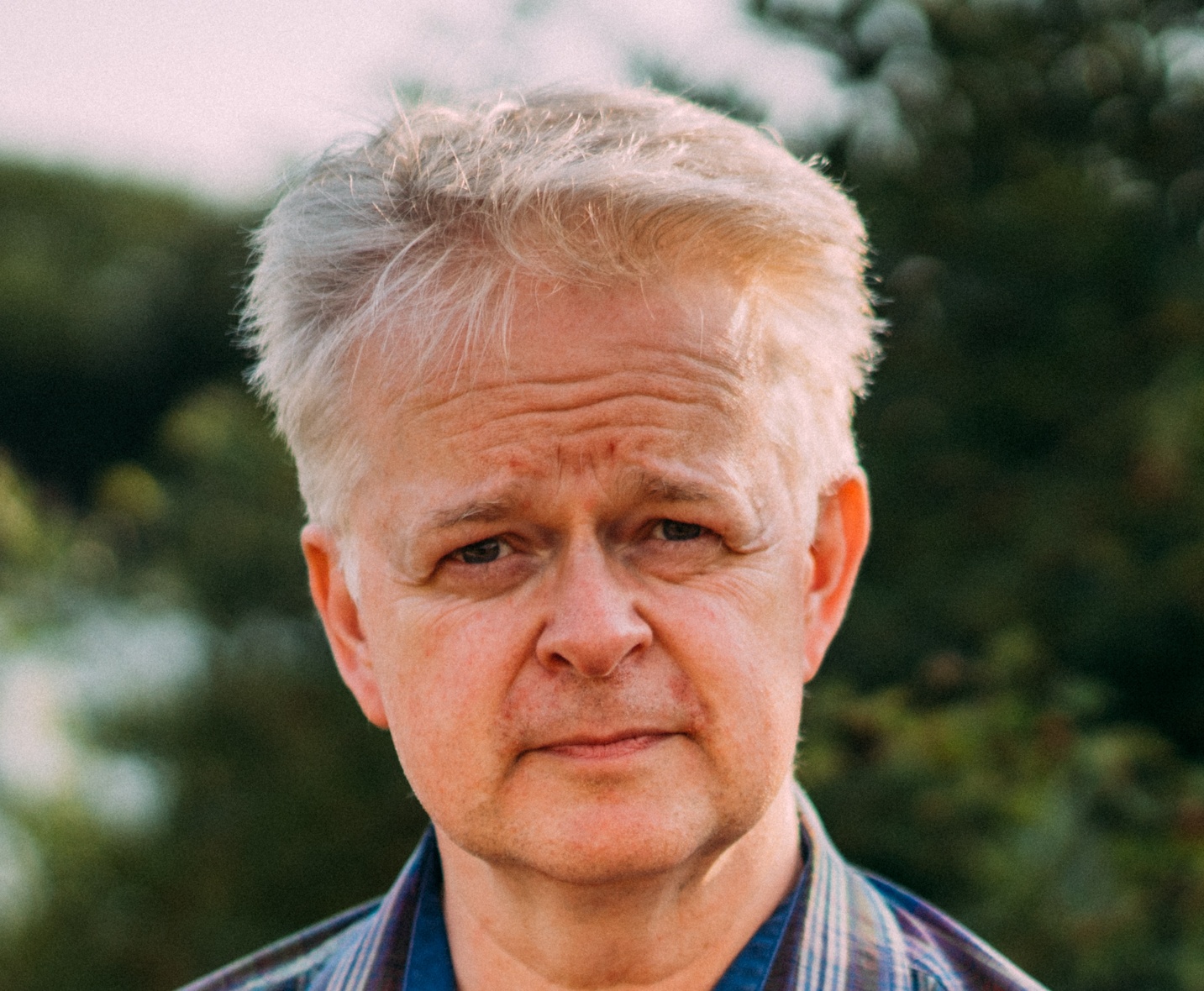
This was a non-fiction contest entry that failed to get awarded anything. Perhaps because it wouldn’t have fit in a mainstream travel magazine (the prize awarded a successful entry). But even though it didn’t involve a motorcycle, I wanted to write a personal story about the difference between being a tourist and a traveller. What is an authentic travel experience? I struggled with this question as a young adventurer wandering through Scotland. I hope you may learn from my experience. But take my advice: don’t put on a See You Jimmy hat.
The Search For Scot: a Caledonian quest for travel authenticity
I had a shock of red hair and a horrid tartan cap on my head as I sat on a statue of a legendary long-necked water beast. Our charismatic and enthusiastic tour guide Doug took picture after picture. The cameras were lined up on top of a rubbish bin at the Loch Ness Visitor Centre, while the nineteen of us got plenty of practice shouting “Nessie”. My patience was wearing thin.
I may have had enough of this extroverted gamboling across Scotland, but I was also beginning to feel like a stick in the mud. Was this the real Scotland? After all, I was sitting on a plesiosaur-shaped piece of concrete and acting like I was eight.
Let’s go back a month to when I booked this excursion into passionate tourism.
I was a twenty-eight-year-old living and working in London. My contract with a television production company was about to end. What an opportunity to stretch out and see the rest of the United Kingdom, I thought. The sudden realization that I could travel was exciting. It was also a bit nerve-wracking. It wasn’t every day I got to investigate the land of William Wallace and age-old castles. The movie Braveheart had been released just a few years previous and I knew it well. Monty Python and the Holy Grail had been filmed around Scotland too. I had read Robert Burns and Sir Walter Scott. I wanted to get it right.
Previous self-guided trips into Ireland and around England had, at times, found me wandering about somewhat aimlessly. I had the freedom to do what I wanted traveling solo but lacked local knowledge. So I succumbed to my need to have a comprehensive group experience and booked a week’s guided tour of Scotland.
A month later, my giddy tour group was modeling the See You Jimmy hat at Drumnadrochit. This was what Doug called them. I didn’t ask as to the provenance of the term.
The group was made up of New Zealanders, Australians and Germans for the most part. I was the only Canadian. I had taken the train solo to Edinburgh and stayed cheaply in a shared bunk bed dorm room in a youth hostel. After a day checking out Edinburgh Castle, wandering around Calton Hill and hiking to the top of Arthur’s Seat, it was time to get down to business.
The bus wasn’t what I pictured. It was yellow. And small. As my fellow sightseers got on board, I took note of the various accents I heard. I seemed to be the elder of the group. Many had backpacks. Some were loudly proclaiming themselves to the rest of us. Clearly we were going to have a party. I slid a little further in my upholstered seat and stared at the tiny blank TV screen above me.
At first it seemed we were hitting all the stops. First off was the granular and rough-hewn tower of the William Wallace Monument at Stirling built in the 1860s to honour the Scottish hero of the 13th century. I marveled at Wallace’s broadsword, encased in glass and nearly taller than me. After that it was on to Doune Castle, where John Cleese had once shouted insults at Graham Chapman in a silly French accent. Then it was on to the solemnity of the gravesite of Rob Roy MacGregor and further into the rugged scenery of the bens and lochs of the Trossachs.
Settling in for the evening at shared accommodation in Oban, many turned to the bar to get comfortably laminated, while I convinced a few of my newfound fellow explorers to get castled. Through the mist, I walked up a nearby hill to Dunhollie, a three-story stronghold of the McDougalls of Lorne built in the 15th Century. I was standing defiantly against the precipitation at the base of the ivy-covered fortification, eyes determinedly looking west across to the Isle of Mull. This was the kind of adventure I’d wanted, making the most of the time in this place far from home. Authentic Scotland. I was getting it right.
As the days wore on and castles and lochs and historical facts continued to be absorbed, wittily served up by our gifted guide Doug, I found fewer explorers to join me in my evening jaunts to local landmarks. Some were heading for a wee nip of whisky, more for just a cooler or a pint. It was in Kyleakin on the Isle of Skye where I noticed a discernable change in the mood of the tour group. Even though I marched, alone and in the dark, to the ruins of Castle Moil, continuing my quest to collect photographs of castles, talk to locals outside of the hostels and gather facts and figures and legends for later retelling, I felt more and more like the odd one out. I returned to the hostel’s pub where I found my tour group mid-party, some of which had spilled out onto the parking lot. These guys were on a separate quest.
I had a few wee nips myself and found myself falling from the purer faith. I couldn’t stand myself. What had I done?
The following day I discovered the ideal hangover remedy. Sticking your pounding skull for a few seconds into the icy waters of a Scottish river will cure anything that ails you. Dipping your head in the Sligachan will also provide you with eternal youth, if I believed the tales told by our always keen and good humoured tour guide Doug. After I shook the water from my hair like an obedient terrier, we were soon trudging up a hill past grunting hairy coos to the phallic rock formation of the Old Man of Storr, partially hiding in a stubborn fog.
I felt in a fog of my own, somehow wanting to break free from the group, yet too scared to know how to do it. As Royal Air Force fighter jets boomed overhead, we traveled to haunted Carbisdale Castle. It happened to be Scotland’s largest youth hostel. Gathered again in a shared room, albeit much bigger than those found in previous ones, I rolled my eyes at a very audible Limp Bizkit track coming from one of the Aussies’ CD players. I gave my excuses about wanting to explore the castle to one of the New Zealanders who gave me a look of disbelief. His patience was over. He knew what I was about.
I was searching for Betty. The pure white image of the resident ghost would understand. Empty halls and gold chandeliers throwing reflections of light against the hardwood floors and fading landscape paintings greeted me around every turn. Where had I gone wrong Betty? I was a traveller, now I’ve become a tourist sheep. I’ve lost my way. Please help me see the right path!
The closest thing to Betty I found that night were white porcelain statues in the greco-roman style standing on dark wood plinths. The impassive looks on their faces had me looking inward for answers.
Sitting alone in a bus filled with partying revelers aimed at Edinburgh the next morning I had realized my mistake. I had been looking for the essence of travel. What I’d been confronted with were my own expectations. They were leading me to see what I wanted to see. Amidst visiting the empty fields where a blue-faced Mel Gibson once shouted encouragement at hundreds of heavily-armed extras and petting hairy coos I had expected authentic travel and been hit square in the face with my own preconceived notions of what Scotland was and not let the journey happen. The partying revelers weren’t the problem. They were taking each day as it came, so long as there were drinks to be had in the evenings. In my quest to be a traveler, I’d become a tourist.
One of our last stops was Drumnadrochit and Loch Ness, where I had firmly placed a shock of synthetic red hair on my head for a group photo. In it I’m distinctively crouched down in a position of defeat, a smile covering my disappointment and wish to flee.
After the photo event I strolled down solitarily to the edge of the loch in the soft rain and didn’t see a single creature emerge from its waters.
